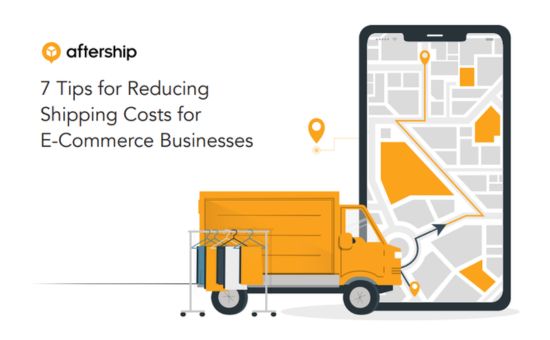How to Take Your B2B Brand Direct-to-Consumer | Bigcommerce
E-Commerce & Retail
Direct-to-consumer (DTC) commerce is not a new concept, but it’s rapidly gaining momentum due to disruptor brands and changing consumer shopping behaviors. Transitioning from business-to-business (B2B) sales to direct consumer sales poses challenges for manufacturers and distributors. This guide offers actionable solutions to help you navigate these challenges and successfully launch a DTC ecommerce website.
You’ll learn about:
- The benefits of selling directly to consumers
- Addressing potential conflicts with retailers and channel partners
- Key technology considerations for online sales
- Effective strategies for building brand awareness and marketing products
- Meeting expectations for order fulfillment, shipping, and customer service
The Rise of Digitally Native Disruptors
With the growth of digital commerce, consumers increasingly prefer purchasing directly from a brand’s website. New digitally native companies are capitalizing on this trend, creating a significant shift toward DTC sales.
The Growing DTC Trend
According to Diffusion’s 2021 DTC research report, 43% of Americans are familiar with DTC native brands, and of those, 69% have made at least one purchase within the past year. Industries such as wellness, apparel, big retail, and tech are seeing the most significant consumer shift from traditional retail to DTC, presenting substantial challenges for many established brands.
Additionally, counterfeit goods sold by third-party sellers on global marketplaces are eroding consumer trust. About 52% of U.S. consumers report losing trust in a brand after unknowingly purchasing counterfeit products online.

The DTC Opportunity for Manufacturers
Despite these challenges, there are new opportunities for manufacturers to launch DTC ecommerce websites. Consumers are already visiting brand websites, ready to make purchases. BrandShop’s 2018 Consumer Preferences Survey found that 87% of consumers would buy products directly from a brand online if given the option.
Consumer packaged goods (CPG) brands like Ben & Jerry’s, Clorox, and Nestle are leading successful DTC initiatives. An August 2020 study, “DTC and The New Brand Loyalty Opportunity,” revealed that nearly 55% of consumers have used DTC channels to purchase CPG products or nonperishable items over the past year.
While the pandemic has accelerated the launch of DTC websites in some industries, hesitation remains. Currently, only 54% of manufacturers express a desire to sell directly to consumers online.
By embracing the DTC model, manufacturers can enhance customer relationships, improve control over brand experience, and increase profitability through direct sales channels.
Advantages of Investing in a DTC Website
If you’re still undecided about investing in a DTC ecommerce website, consider the following advantages:
Add a New Revenue Stream
Manufacturers are increasingly competing for limited shelf space as retailers scale back physical locations, a trend exacerbated by the ongoing pandemic. With brick-and-mortar retailers closing temporarily or permanently, consumers are turning to online shopping for products they would typically purchase in-store—a trend likely to persist post-pandemic. Jason Nadaf, founder of SureDone, notes, “Part of what’s driving the direct-to-consumer surge today for manufacturers is that pallets of products are collecting dust in their warehouses, and they need a way to get them out the door.”
Manufacturers are uniquely positioned to meet these consumer demands and compensate for lost sales due to shrinking retailer space. Even if your business isn’t facing these challenges, you can still reach potential customers searching for your products online. For instance, a Retail TouchPoints survey found that 33% of shoppers consider a brand manufacturer’s website the most influential resource when researching a potential purchase.
Capture Customer Behavior Data
Access to first-party data on customer behaviors is often limited for manufacturers, with most feedback filtered through dealers, retailers, and possibly social media channels. Typically, this information is transaction-related. However, selling directly to consumers allows you to collect a broader range of first-party data on their behaviors.
Combined with transactional data from retailers and your website, this data provides a comprehensive understanding of your customers. Leveraging this information enables strategic business decisions in product development, packaging, and pricing. For example, you can test new luxury brands or launch products in new markets through a DTC ecommerce channel, using first-party data to guide rollouts to retail partners.
Build Customer Loyalty and Trust
Selling DTC gives you control over the entire customer journey, from the moment someone lands on your website to product delivery and beyond. Using collected data, you can create customer-centric experiences, such as recommending products based on recently viewed items. Additionally, you can send emails to gather feedback or provide tips for using purchased items.
For millennials, a generation representing 30% of total retail sales in the U.S., these customer-centric experiences are crucial. Researchs shows their loyalty is directly related to how they perceive brand treatment. Plus, selling DTC builds trust with customers who want assurance they are purchasing from an official source, especially important if selling on third-party marketplaces like Amazon.
- THE RISE OF DIRECT-TO-CONSUMER COMMERCE
- Advantages of Investing in a DTC Website
- How to Overcome the Challenges of DTC Selling
- CHALLENGE #1: Navigating Channel Conflict with Retailers
- CHALLENGE #2: Integrating Technology for Ecommerce Operations
- CHALLENGE #3: Attracting Customers to Your Online Store
- CHALLENGE #4: Managing Customer Expectations for Order Fulfillment
- Start Your DTC Channel Today
Number of Pages:
- 15 pages
Pricing:
- Free






